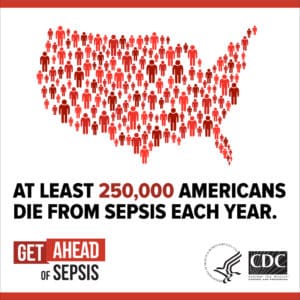A 23-year-old female with a history of acute myeloid leukemia and recent haploidentical stem cell transplant, cytokine release syndrome and severe mucositis following receipt of post-transplant cyclophosphamide therapy.
Discussion:
Upon admission, the patient was initially given cefepime for the treatment of febrile neutropenia. Due to the patient’s history of AML and neutropenia, she was at risk for organisms such as P. aeruginosa in addition to other common causes of febrile neutropenia such as Enterobacteriaceae.
At the time of admission, she had blood cultures obtained and T2Bacteria ordered. At this hospital, patient selection for T2Bacteria testing included onco-hematologic and HSCT patients with suspected bloodstream infections.
Bloodstream infections are a major cause of life-threatening complications in patients with cancer, due to the potential delays in chemotherapy, longer hospital stay, suboptimal treatment, higher mortality rate, and increased healthcare costs. The poor performance of blood cultures has a major impact on the clinical management of febrile neutropenic patients, especially in cases of unexplained persistent fever. T2Bacteria direct from blood diagnostic technology provided clinically relevant information for the diagnosis of infection in this case of blood culture-negative febrile neutropenia. Cefepime was continued for a total of 7 days, which was 2 days longer than would have been prescribed based on the negative blood cultures after the patient defervesced and ANC increased to >500.
Presentation
A 23-year-old female with a history of acute myeloid leukemia and recent haploidentical stem cell transplant, cytokine release syndrome, and severe mucositis following receipt of post-transplant cyclophosphamide therapy. The patient developed fever and blood cultures, T2Bacteria, and empiric antibiotics were ordered.
Patient Selection Criteria
Febrile neutropenia in a patient with AML
Evaluation and Treatment Decision
Diagnosis
Neutropenic fever
Empiric Therapy
Cefepime
Cefepime was chosen for coverage of common causative pathogens identified in febrile neutropenia.
T2Bacteria Result
Positive for P. aeruginosa and negative E. faecium, S. aureus, E. coli and K. pneumoniae.
Blood Culture Result
No growth
Decision making based on T2Bacteria Result
A rapid T2Bacteria result allowed for early diagnosis of P. aeruginosa bacteremia and confirmation of effective empiric antibiotic therapy. Identification of P. aeruginosa by T2 also provided important diagnostic information that allowed for more informed treatment decisions, including the continuation of IV antibiotics for longer treatment duration.

 In the decade and a half since Dr. Nathan wrote these words, the standard of care has remained mired in “19th-century methods.” Despite important diagnostic improvements made to post-blood culture methods, the days-long culturing of blood remains the foundation for pathogen-specific identification. Since clinicians cannot wait days to act when confronted with a patient suspected of sepsis, the standard of care remains empiric therapy. In the 2018 book,
In the decade and a half since Dr. Nathan wrote these words, the standard of care has remained mired in “19th-century methods.” Despite important diagnostic improvements made to post-blood culture methods, the days-long culturing of blood remains the foundation for pathogen-specific identification. Since clinicians cannot wait days to act when confronted with a patient suspected of sepsis, the standard of care remains empiric therapy. In the 2018 book,